Hearing Tests
Diagnostic Audiological Evaluation
Our audiologist has extensive experience working in the field of Audiology. Sreejith Nair takes a detailed case history and an inventory of your communication difficulties and goals. Diagnostic audiometric testing is done in a sound test booth. We provide our patients with a report of the test results, hearing device consultations, dispensing, verification and post-fitting counselling. Long-term follow-up maintenance and adjustments are also offered.
Diagnostic Audiologic Evaluations
A comprehensive diagnostic hearing evaluation is completed to determine if a hearing loss is present, and if so, to detail the type and severity of the hearing loss. The components of the evaluation are:
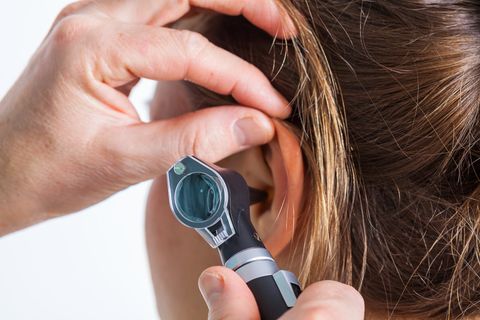
Otoscopy
We do a visual inspection of your ear canals. It allows the audiologist to examine if there is an accumulation of ear wax that needs to be removed by the audiologist, or if there is infection or damage to the ear canal or eardrum that must be evaluated by a physician before proceeding with the hearing test.
Ear Wax Removal
We use a curette to remove cerumen. A curette is a slender tool with a tiny loop at the end that is used to gently lift the cerumen from the wall of the ear canal. If the wax is too hard, or if it clings to the canal wall, we may have you see your physician or ENT to use irrigation and suction.
If you experience pain or discomfort as a result of earwax or suspect you have a blockage, it’s essential that you see your physician as soon as possible to address the issue. Removing earwax doesn’t have to be painful and should bring you relief.
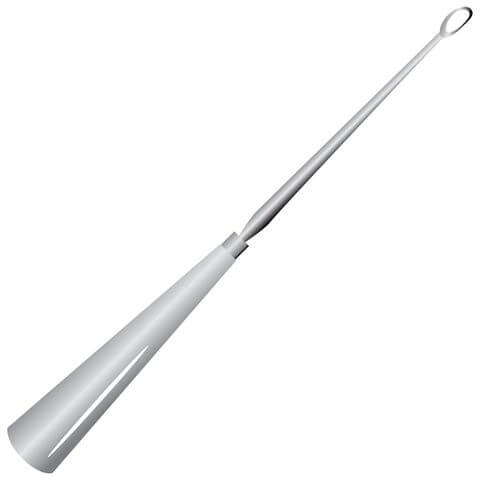
Ear Irrigation
Ear irrigation is a routine procedure used to remove excess ear wax and foreign materials from the ear. We gently spray water into the ear canal at a controlled and steady rate.
We use the OtoClear® Ear Aquabot system, which is extremely gentle. The OtoClear tip directs water to the ear canal wall with three angled streams, instead of directly toward the eardrum. This is a safe, well tolerated, and clean ear irrigation method.
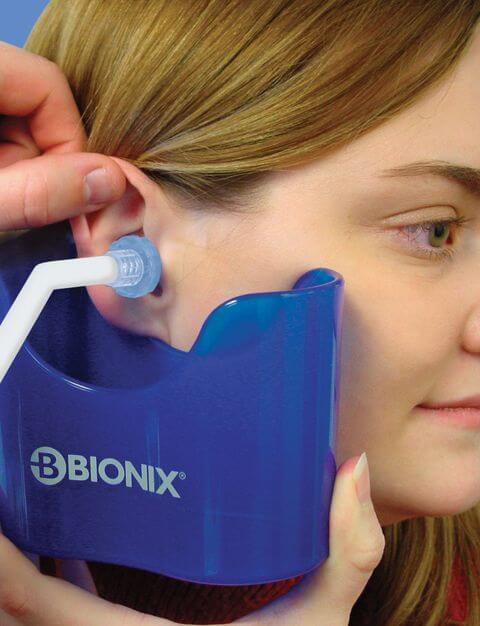
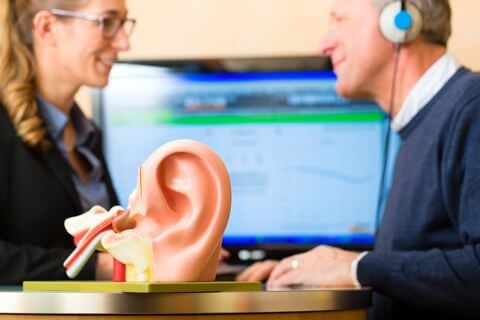
Pure Tone Audiometry
Pure tone testing takes place in our sound-treated booth. The goal of this test is to determine the softest sounds that you can hear at different pitches or pure tones. Air conduction testing is done via regular earphones or with small foam inserts. Bone conduction testing is done with a particular headphone placed behind the ear. The graph of these test results constitutes an audiogram. The results help the audiologist determine if the hearing loss originates from the outer, middle ear or the inner ear. The audiogram helps us see which pitches are not audible, and it forms the basis of our explanation of how you hear in the real world.
Speech Audiometry
Word lists are presented in each ear via earphones. The Speech Reception Threshold (SRT) is the softest level you can repeat familiar words. Word Recognition testing is conducted in each ear with lists of words presented at an audible, comfortable level. The results–measured in percentage–give us an indication of how precisely you discern words when they are entirely distinct in a quiet environment. We use these results to assess the integrity of your hearing ability in quiet before hearing aids are fit. Some patients demonstrate 100% recognition when words are spoken in a controlled environment, and others experience poorer clarity regardless of how loud words are. These scores help us choose the best technology for your hearing and guide our counselling before and after fitting hearing devices.

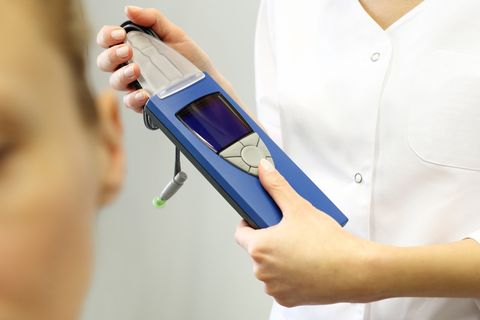
Tympanometry (Immittance) And Acoustic Reflexes
Tympanometry is completed to assess the function of the middle ear. We measure how well the eardrum vibrates by creating variations of air pressure in the ear canal. A series of moderately loud tones are then presented to check muscle reflexes in each ear. This gives us information about the mechanical functions of the ear. A referral to a physician may be made if these tests are outside of the normal range.
